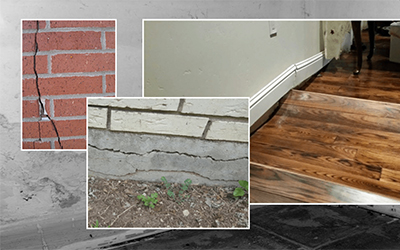Board: Massachusetts Architects
Credit Hours: 2.00
Rating: 23 ratings
Approval Number: J607BGS32
Add to Basket
Course Description
This 2-hour course describes sources of unwanted moisture, dealing with sources of its intrusion, problems resulting from its entry and steps to take once a leak has been discovered. Discovery of a leak involves water observed at the actual point of intrusion or the appearance of localized physical damage or the appearance of mold. Any of these may indicate the presence of excess moisture nearby.
Course Objectives
Upon successful completion of this course, the participant will be able to:
- Explain why water damaged materials can lead to a health risk
- Describe why mold is of particular concern to one’s health and building materials
- Name ailments stemming from microbiological contamination
- List type of damage to materials that can be caused by prolonged exposure to moisture
- Name several health issues arising from air contamination
- Identify building expenses associated to water damage
- List several ways the moisture may enter buildings
- Explain what is meant by 'hidden intrusion'
- Describe ways that water can be denied entry into a building
- Explain methods of blocking transport paths of water
- List ways that moisture can enter a building
- Discuss options to thwart capillary action
- Explain methods of controlling diffusion
- Describe the purpose of rain screens
- List the mitigation steps taken after mold is discovered
- Explain how to assess then address drywall damage
- Describe how to treat wet carpet and its time sensitive dependency
- Summarize the response to electrical systems damage
- Contrast the steps to follow with a water leak found before and after 48 hours
- Describe the general process for cleaning mold
- List several of the many steps that are part of the EPA’s mold guidelines
- Explain the previous experience a mold-removal expert should possess
Instructor Bio
 Paul Spite, BS, BA
Paul Spite, BS, BA
AFD Consulting, Founder and Principal
Paul is a Registered Architect with over forty years of experience, a course developer and has been a teacher in multiple venues in the past. He is also a writer in many venues, having developed many studies, a few published articles, numerous short stories, multiple screenplays, two non-fiction manuals for church design and one novel. More to the focus of this endeavor, Paul has also created presentations for twenty-six lunch and learn presentations for building material manufacturers, webinars covering the subjects of Aging-in-Place and Architectural Acoustics and eleven distance learning courses for architects, engineers and contractors. As he nears retirement from managing his small architectural practice, Paul hopes to focus even more of his energy on teaching and on course development.



